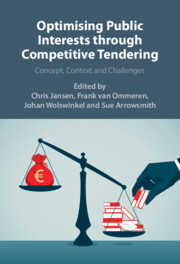Book contents
- Optimising Public Interests through Competitive Tendering
- Optimising Public Interests through Competitive Tendering
- Copyright page
- Contents
- Contributors
- Preface
- Table of Cases
- Abbreviations
- 1 Optimising Public Interests through Competitive Tendering
- Part I Characterising Limited Rights
- Part II Connecting Limited Rights
1 - Optimising Public Interests through Competitive Tendering
Connecting Limited Rights
Published online by Cambridge University Press: 11 April 2025
- Optimising Public Interests through Competitive Tendering
- Optimising Public Interests through Competitive Tendering
- Copyright page
- Contents
- Contributors
- Preface
- Table of Cases
- Abbreviations
- 1 Optimising Public Interests through Competitive Tendering
- Part I Characterising Limited Rights
- Part II Connecting Limited Rights
Summary
This introductory chapter explains the need for adopting an overarching perspective to the allocation of limited rights. Although the applicable legal frameworks may suggest otherwise, the awards of public contracts, authorisations, subsidies or government sales share common characteristics in the event that the number of rights available for grant is limited. These similarities are nowhere as manifest as with regard to the question of whether governments should use some form of competitive tendering when allocating these ‘limited rights’. Although the public interests involved in the allocation of these limited rights differ in substance and respective weight, competitive procedures should aim to optimise the pursuit of the different public interests involved. Using Mark Moore’s theory of creating and recognising public value, this chapter provides a general reflection upon the distinct role of the legal framework for allocating governments in solving this optimisation problem.
Keywords
- Type
- Chapter
- Information
- Optimizing Public Interests through Competitive TenderingConcept, Context and Challenges, pp. 1 - 34Publisher: Cambridge University PressPrint publication year: 2025

